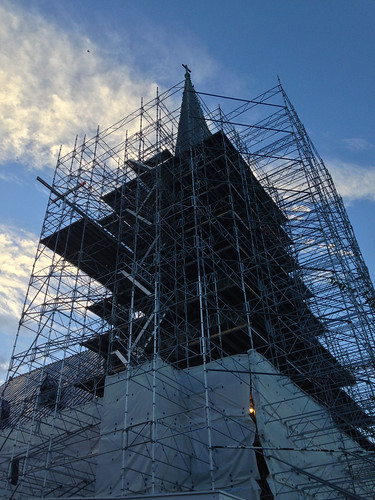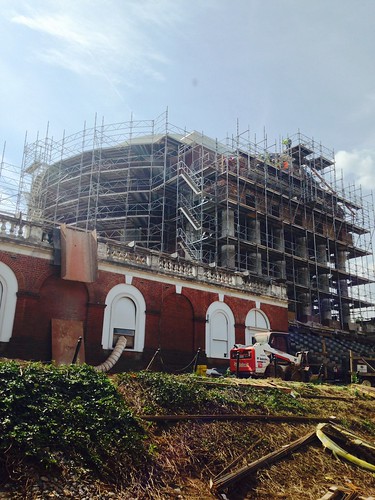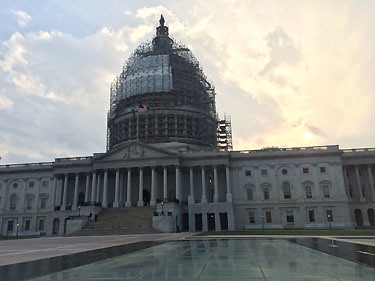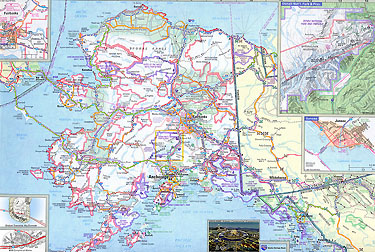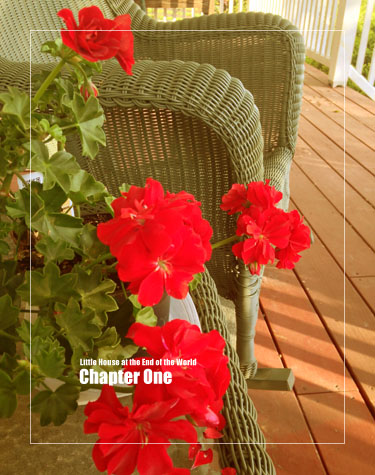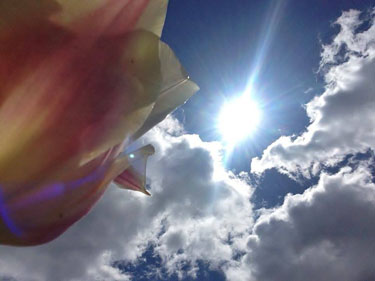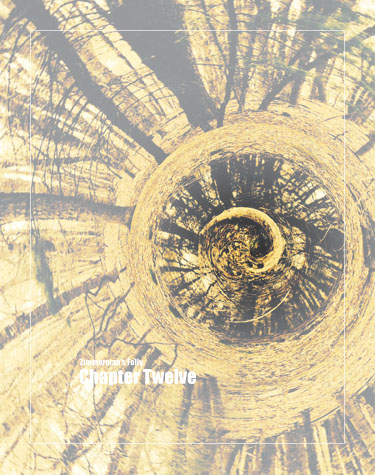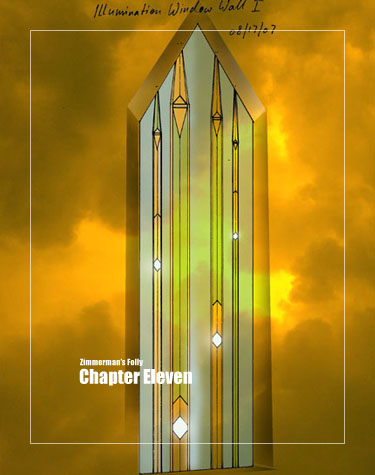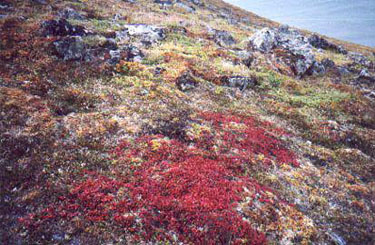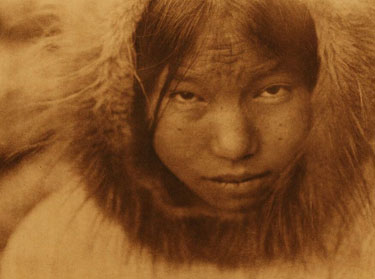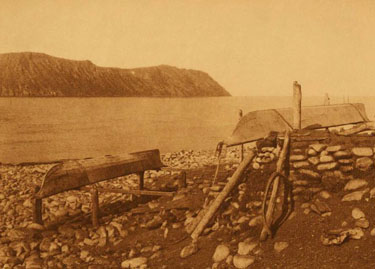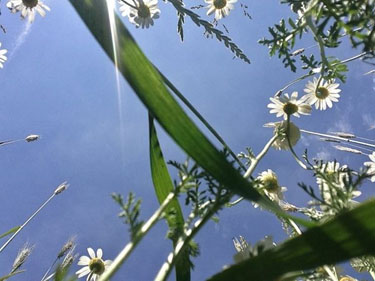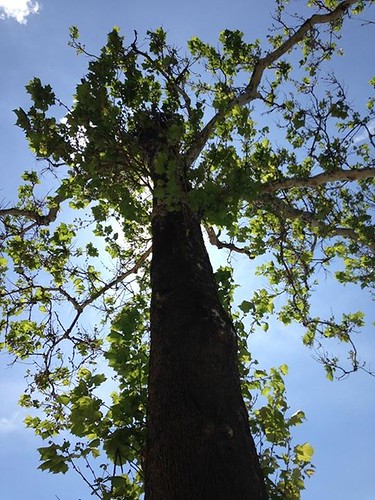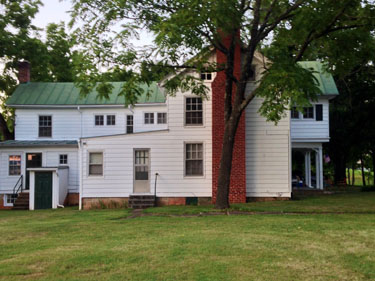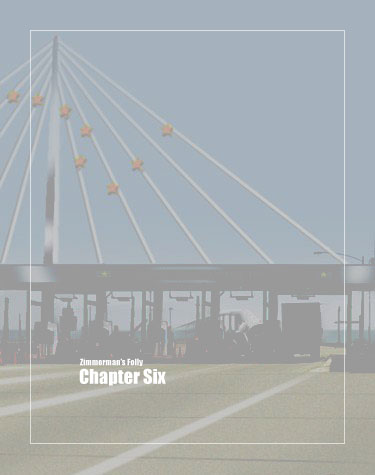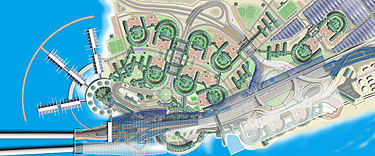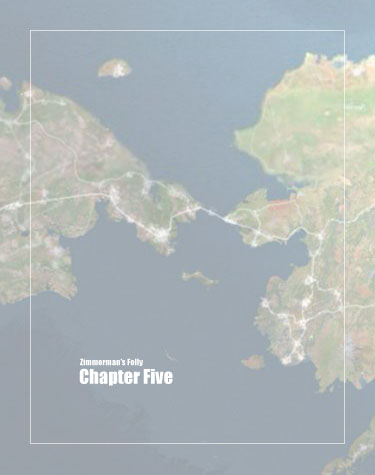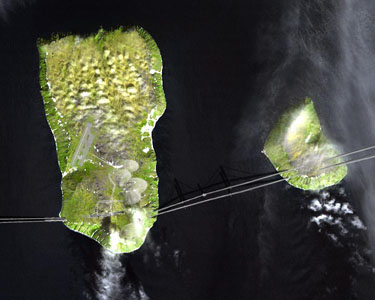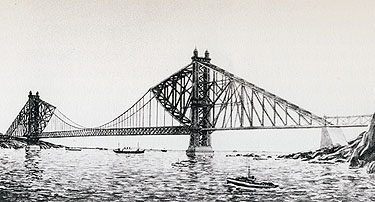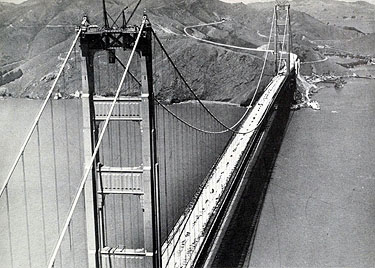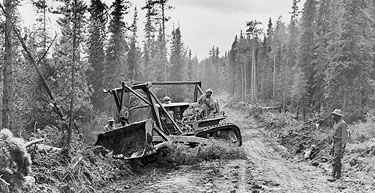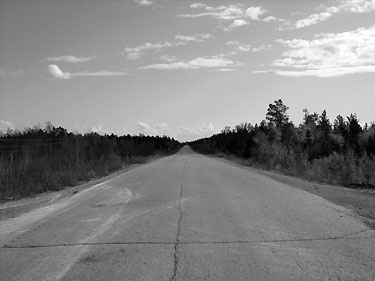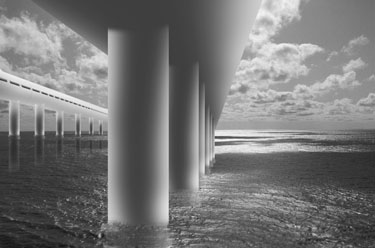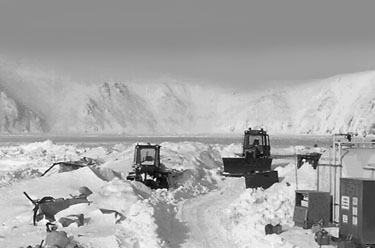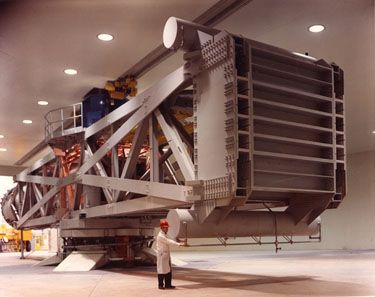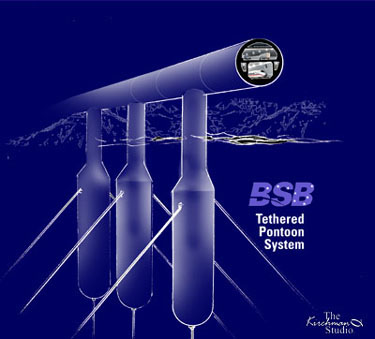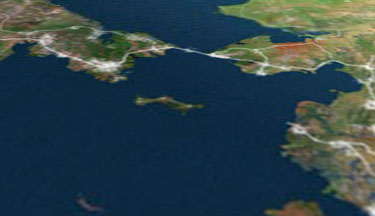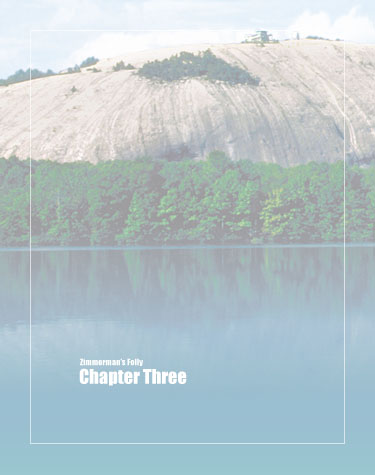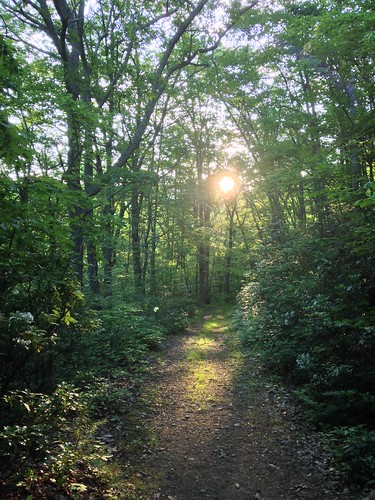
From these principles and our labors together emerged one of our country's great airlines and further developed our great heritage of pioneering. In the years ahead young, strong hands will carry them into a future which you and I, with all our dreams, can scarcely visualize” – Captain Eddie Rickenbacker in a letter to Eastern Air Lines employees
Eventually the administration agreed to release Zimmerman upon payment of the so-called 'tax liability.' The airplane and a sizeable number of Petrodollars would secure his freedom! No charges would be levelled against Rupert upon payment of this 'debt' and he would be free to travel in the 48 United States again. Elizabeth wired payment quickly, knowing her father would be furious! She knew he'd rather rot than fund the lower 48's insatiable appetite for money, but in the end all were glad to have the ill feelings of the war behind them.
Rupert had actually been quite grateful to Elizabeth. Prison food was such that vending machine fare was fine dining in comparison. A man like Zimmerman fares poorly in captivity, his mind pacing like a caged tiger even as he seems to be calmly working in the facility's sterile kitchen. Pat made sure he had regular visits but she had to remind herself that he was a stallion fighting being gelded. He did seem to have grown calmer, though he still felt free to share strong emotions with her.
When he walked out of the prison, Pat drove him back to Virginia. He knew his daughter would take good care of things in Wales, so he and Pat stayed a few days in Lexington. Here in Rockbridge County the leaders of Texan Independence had lived before they went West. Taking one of Rupert's old Porsches, the couple drove through the Smoky Mountains of Tennessee and North Carolina. Here was the site of the great Cherokee Nation, part of the heritage of Kris and her husband... now but a memory, but indeed a nation as great as the Yupik, who now shared representation in the Alaska assemblies. The Cherokee had built a modern nation in the midst of the white settlers only to be undone when gold was discovered in Dehlonega, Georgia. Alaska's Yupik had been quietly enfranchised during the war and hopefully would never be removed from their ancestral lands.
Motoring South, the Zimmermans entered the foothills of the Appalachians in South Carolina. Zimmerman wanted to see Abbeville, where the Confederates had drafted their 'Articles of Secession.' He was curious to visit a place where men had sought to control their destiny as a people... and had paid dearly to do so. The Porsche started acting funny, spitting and missing as he pulled into a little town that was mainly a college. There, among the signs for campus buildings, a matching sign directed you to 'Top Notch Auto Repair.' "Do you guys work on Porsches?" Zimmerman had asked. The owner of the shop not only worked on them, but was a fellow enthusiast, proudly pointing to his own. Zimmerman was impressed with this 'Academic Village' where a car repair shop rubbed shoulders with college buildings, even sharing their signpost! Professors frequented the hardware store and the campus seemed amazingly CONNECTED to the town that sustained it!
He found a nice little bed and breakfast and left Pat to 'pretty up' for dinner. It was growing late and Zimmerman noticed that some of the college food service workers were walking home. The college lawn opened onto the street where their simple homes were arranged like an extension of the academic community. He had visited the University of Virginia, but was dismayed to see how Jefferson's Lawn had once opened to the surrounding countryside, but did so no longer. Stanford White, a New York architect had decided to 'improve on' Jefferson's original design by closing off the lawn with his Cabell Hall. That is where Rupert saw a nice rendering of Raphael's 'School of Athens.' It had been painted by George W. Breck, a muralist from New York in 1902. It was the university's second comissioning of a copy of Raphael's famous painting in the Pope's private library in the Vatican. The first, painted in 1853 by French artist Paul Balze was destroyed by a fire in 1895. Breck's copy was scaled four inches different from the Vatican original to avoid violating a Vatican policy prohibiting exact copies.
Cabell hall also contained a more contemporary mural painted as a companion to 'The School of Athens,' which followed the life of a student in the early years of the Twenty-first Century. Its painter, Lincoln Perry, called it "Student's Progress." The most interesting feature of the newer painting was a recreation of the open vista of the original lawn, now obliterated by Cabell Hall! The open lawn, revealing rolling hills and mountain vistas intrigued Zimmerman. He stood in deep contemplation on the Rotunda steps, trying to imagine the scene as originally constructed.
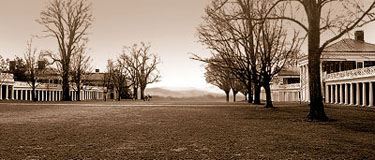
The Lawn of the University of Virginia originally opened to the surrounding community and countryside. Photos and rendering overlay by Bob Kirchman.
There was an inescapable irony in these walls. Historians tell us it is very likely that the author of American liberty had employed slave labor in the building of his university. Any remaining vestiges of this foul institution were nowhere to be seen, but the thought that this might be true troubled Zimmerman greatly. The more he understood his daughter Elizabeth's heart, the more he cherished her work to promote human freedom. Yet Jefferson was the one who had penned, borrowing from Locke, the description of "Certain Inalienable Rights." Years later the work of Abolitionists and later the Freedom Riders had indeed opened the vista of freedom to the children of slaves. Man in his folly needed a vision of himself perfected by lofty ideals as a starting point. Zimmerman was now convinced that the promotion of such ideals was indeed a worthy work. His own sense that he was inadequate for the work was a necessary admission, yet he could not allow it to become an excuse!
He'd once visited Nils Frederick Larson's attempt to recreate Jefferson's Lawn for a university in North Carolina. Larson had initially closed off the Quadrangle, as it was called, on all sides, modeling White more than Jefferson. Jefferson's buildings had colonnades and archways that connected the buildings. You could walk from his Rotunda to the farthest room under cover. Larson's arcades and colonnades did not connect... they were a sort of false promise... sort of like the separation he saw in the tribalism that passed for 'diversity' in the classrooms. Eschewing the notion of high and noble ideals for humanity to aspire to, modern thinkers sought to recreate institutions rather than enlighten the heart. Their notion that 'man was basically good' and that the institutions were the problem did not resonate with a man like Zimmerman, who needed no-one to remind him of the dark places of his own heart.
In the end it was Jefferson's Lawn that had impressed Zimmerman the most. He tried hard to imagine the original layout as conceived by the patriot. The Rotunda occupied a high place and two colonnades framed a view from the Rotunda steps of a manicured lawn flowing freely into the rolling hills of Albemarle County. A noble institution to address the frontier... and indeed a part of it at the beginning. The closing off of the Lawn bothered Zimmerman deeply. Here, however, in the countryside of South Carolina, was a campus that still freely mingled with the world it inhabited. Zimmerman was inspired.
In the center of a large grassy quadrangle. Zimmerman found a statue of one of the college presidents. The man, like Zimmerman, had been wounded in battle during America's Nineteenth Century Civil War. The Statue inscription read: "Citizen, Soldier, Educator, Servant of Christ." Zimmerman strove to be all of these, but felt woefully inadequate for the task if the truth be known.
The next morning, with his car repaired, Zimmerman continued his journey but the seeds of his next project were now firmly planted in his mind. When he returned to the Autonomous Republics he met with Greene to begin his plans for an institute of higher learning.
[click to read ]
Copyright © 2019, The Kirchman Studio, all rights reserved

